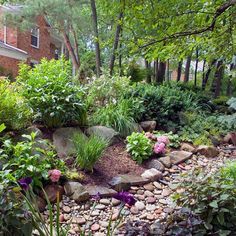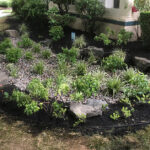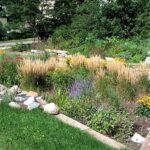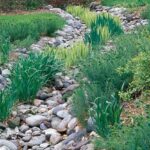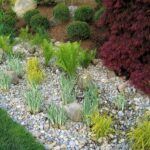Rain gardens are an eco-friendly landscaping solution that not only beautifies outdoor spaces, but also helps to mitigate stormwater runoff and reduce pollution in waterways. These gardens are designed to capture rainwater from roofs, driveways, and other impermeable surfaces, allowing it to slowly infiltrate into the ground rather than flowing directly into storm drains and ultimately into rivers and streams.
Effective rain garden design involves careful planning to ensure that the garden is both functional and aesthetically pleasing. One key aspect of design is selecting the right location for the garden. Ideally, a rain garden should be situated in a low-lying area of the property where water naturally collects during storms. This helps to maximize the amount of runoff that can be captured by the garden.
Another important consideration in rain garden design is size and shape. The size of the garden should be proportional to the amount of runoff that it will receive, with larger gardens able to capture more water. The shape of the garden should be gently sloping to encourage water to flow towards the center where it can be absorbed by the soil. Incorporating curves and unique shapes can also enhance the visual appeal of the garden.
In terms of plant selection, native species are typically recommended for rain gardens as they are well adapted to the local climate and soil conditions. These plants are typically more drought-tolerant and require less maintenance than non-native species. Additionally, native plants provide important habitat and food sources for local wildlife. When choosing plants for a rain garden, it’s important to consider factors such as sun exposure, soil moisture levels, and mature plant height.
Proper maintenance is key to ensuring the long-term success of a rain garden. Regular maintenance tasks may include weeding, mulching, pruning, and monitoring plant health. It’s also important to periodically check for sediment buildup and ensure that the garden is functioning properly. In some cases, additional soil may need to be added to replenish nutrients and improve infiltration rates.
Overall, rain garden design is a sustainable landscaping practice that can help to reduce the negative impacts of stormwater runoff on the environment. By carefully considering factors such as location, size, shape, plant selection, and maintenance, homeowners can create a beautiful and functional rain garden that enhances their outdoor space while also benefiting the local ecosystem.
